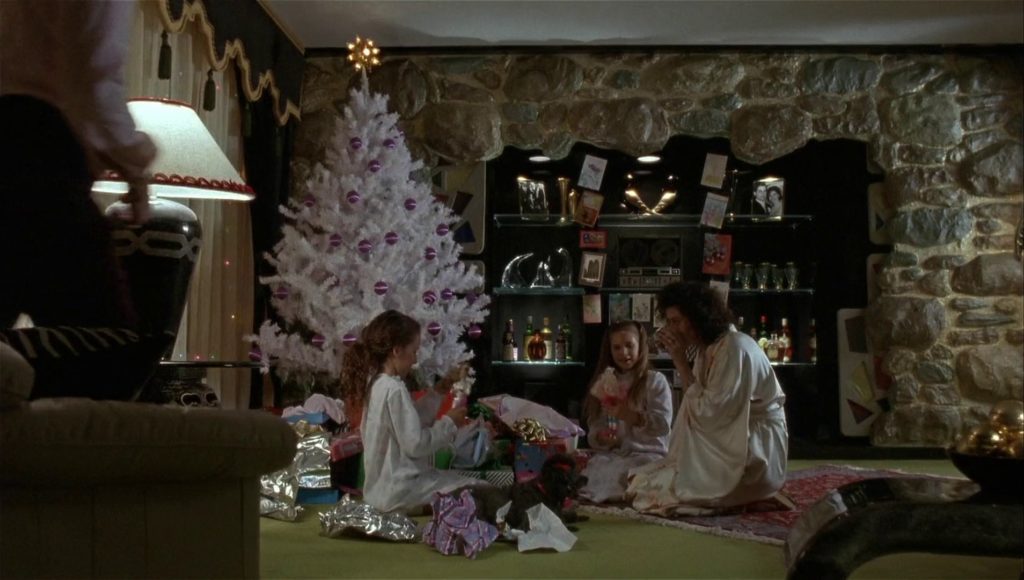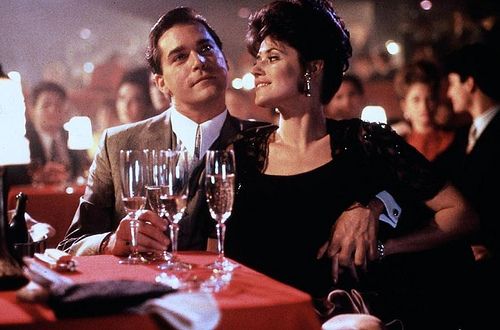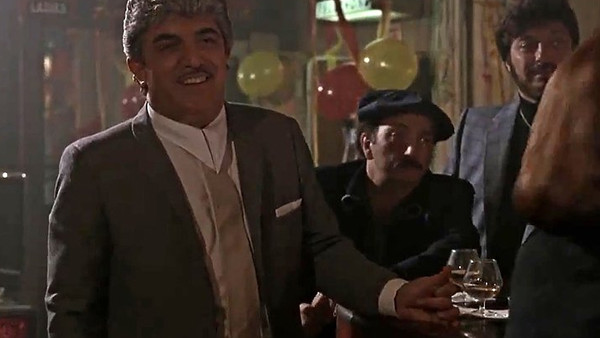
Although he played a minor role in Goodfellas, the Billy Batt’s character served as a fulcrum upon which the entire film rested, even the film title. If you recall, we hear only hear the term “goodfella” referenced a single time during the entire movie and it just so happened to be directly after Tommy’s death.
The brutal opening scene also sets the stage for the film as we are initially left in the dark about the characters and their motives. After that shocking opening, we are slowly introduced to these characters, almost hypnotized by their lifestyle so that we forget what we initially watched.
The Charm & Appeal of Goodfellas
The first half of Goodfellas charms the audience by highlighting the power and wealth the mafia made for themselves in the ’50s and ’60s: fancy dinners, nice cars, even nicer suits, lavish homes and to top it off a total disdain for the law as well as those so-called working people who chose to respect it.
The ability to skirt the rules is best captured by the date scene between Henry and Karen, which also happens to be one of the film’s most memorable scenes. The dinner date scene makes what the mob are doing just to easy, causing the viewer to question why they get up and go to work 5 days a week. Herein lies the charm of Goodfellas, yet is fleeting.
Even at the film’s start there were brief stints of the ugly side of the business, such as the scene where a young Henry helps out a stranger wounded by a gun shot by covering him with some aprons from the restaurant. The owner’s comments are a whiff of what’s to come: “You’re a real jerk, you wasted 8 f***in’ aprons on this guy, I don’t know what the hell’s wrong with you, gotta toughen this kid up.” Yet, as the next scene unfolds, we are once again bamboozled by the mob lifestyle so that such situations are soon forgotten just as we most likely did with the brutal opening scene.
This appears to be the way that Scorsese wanted the viewers to understand the slow erosion of morals that would ultimately cause these men and their complicit wives to justify their lifestyle. This is reinforced by the scene where Henry gets caught selling cigarettes by the police. Rather than being punished for getting caught, his social status is elevated for not ratting out anyone, another of the mafia’s commandments. Slowly Henry has learned to throw away the morals taught in his home, which were often delivered via beatings and to embrace a lifestyle that only made sense to young and easily influenced teenager.
The Billy Batts Story Arc Explained

The glamor and charm of the mob lifestyle culminates with the Billy Batts scene; everything after this event spirals downward for the characters. Notice that it wasn’t just Tommy but the entire trio that are complicit in the “first sin” against Paulie by participating in an unjustifiable kill. Furthermore, it’s no surprise that the aftermath of the Billy Batts hit circles us back to the opening scene of the movie, setting the stage for what’s to come.
Notice how after this scene, the charm and initial appeal of the mob lifestyle have all but vanished. We once again are exposed to materialism but it has taken a turn for the worst. Henry Hill buys the most expensive Christmas tree to furnish his home and despite the cost its quite tacky looking yet fitting for an equally tacky, decked out ’70s home. The apartment Henry sets up for his mistress is equally gaudy, a sharp contrast to the more refined images of their earlier life.
Gone are the fancy dinners, live entertainment, and casual joking, instead we are presented with far more drugs and the few scenes in which the characters are commiserating often end in violence or hint at it. It’s difficult to say whether this change is a reflection on the downfall of not just the mob but society itself. In any event, there is not enough lipstick available to apply to this pig of overt materialism, it’s all very ugly.
I refer to the killing of Batts as the “first sin” against Paulie because the “organized” part of the term organized crime was so well presented in the first half of the film. The main characters stole at will and simply paid off the cops to look the other way. Even Henry was convinced of this as getting caught never resulted in long punishment.
The impenetrable status of the mob slowly deteriorates completely after the Billy Batts event. Not only does Henry find himself in prison, he is forced to sell drugs to support his family. Contrast this development with the wedding scene filled with unlimited envelopes from Peter and Paul. The audience, just like Henry and Karen, were fooled into thinking they would be taken care of, so its no wonder that Henry’s already shaky moral foundation is further warped.
Empathizing with Criminals: The Magic of Scorsese

What makes Goodfellas one of the quintessential gangster films is that we end up building a relationship with morally corrupt characters without realizing it. Of course, we have a series like the Sopranos, which shouldn’t be discounted, but that takes place over a period of many seasons. In Goodfellas the magic happens with only 2 hours and some change to spare. Scorsese is even bold enough to tell us what he’s doing when are first introduced to Jimmy Conway: “He was the kind of guy who rooted for the bad guy in the movie.”
Note that in Goodfellas, it’s not just Karen that is seduced by the mob lifestyle but the audience as well. As the film progresses, outsiders are rarely seen just as Karen’s character describes her own experience. This is by design, in order for us not to fall back on our proper moral judgement which is harder to do when you are only exposed to other group members. It’s the stripping away of day to day reality from the audience that allows us cheer for the bad guys since we are only watching things unfold from their perspective.
It’s only at very end of the film that we are spun back into reality, with Henry Hill testifying against his pals. I think it was important for him to break out of the scene altogether and walk around the courtroom as he did, a style I can’t recall Scorsese using in other films and actually quite rare for most modern films. The final dialogue of the film, like a splash of cold water, sobers up the audience back not only into our own but also Henry’s reality. We suddenly realize that these were the bad guys all along.
Final Thoughts on Goodfellas
Despite the glorification of the mob, which could easily be taken away from a film like Goodfellas, the story itself does have a moral foundation. Bad deeds ultimately received their due punishment and those who indulged in the lifestyle paid a heavy price for their participation, and in most cases the ultimate price.
Even Henry Hill’s character is sent to a purgatory of sorts where he must live out the lifestyle he so desperately spent his life trying to escape from. Henry’s fate is best summed by Darien Taylor’s character in Wall Street: “When you’ve had money and lost it, it can be much worse than never having had it at all!“
I hope you enjoyed this analysis and if you are doing a term paper for school, feel free to reference my site, it would be an honor! Looking forward to hearing your thoughts and comments.

Leave a Reply